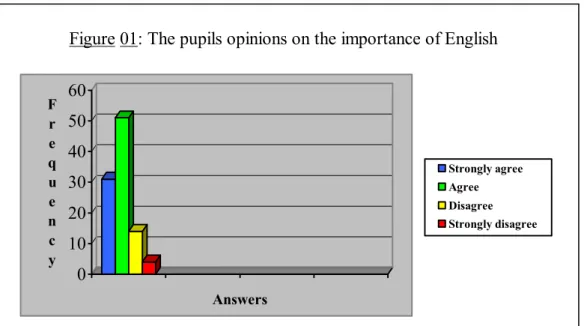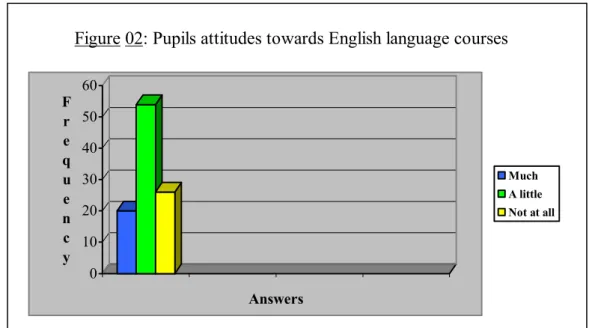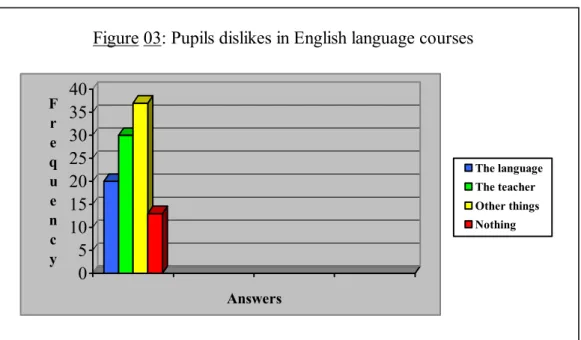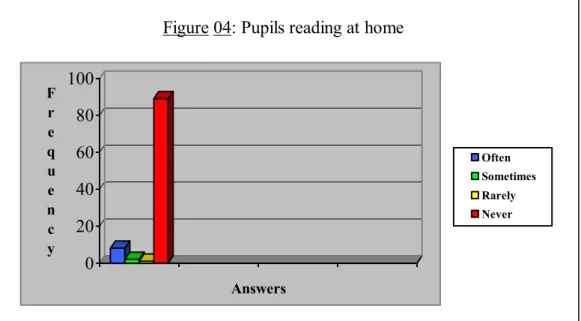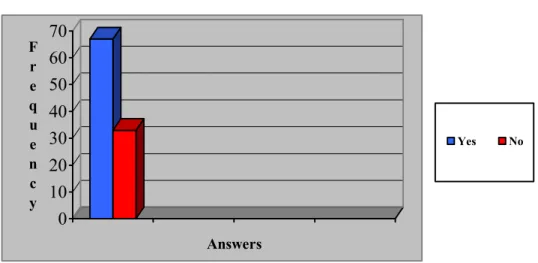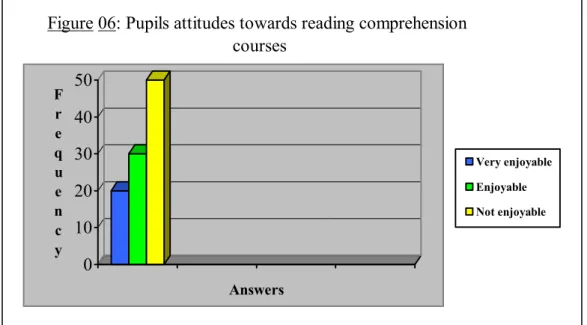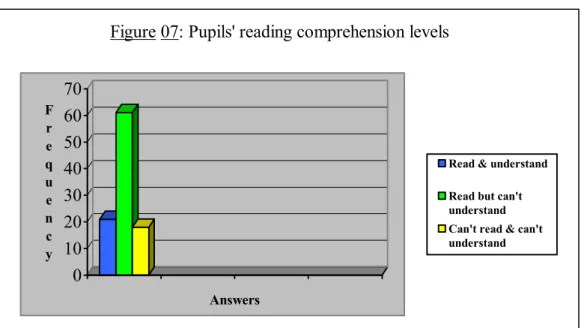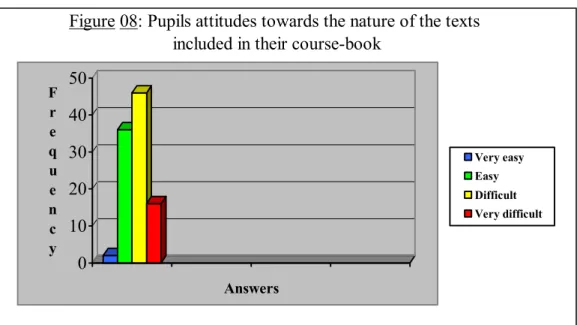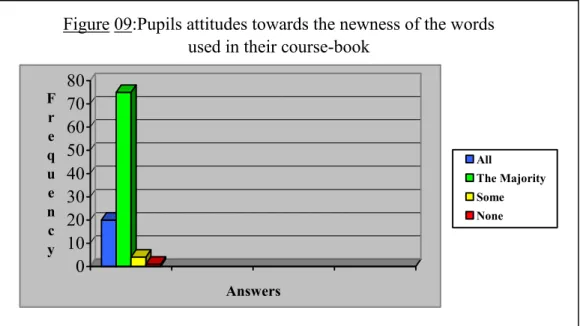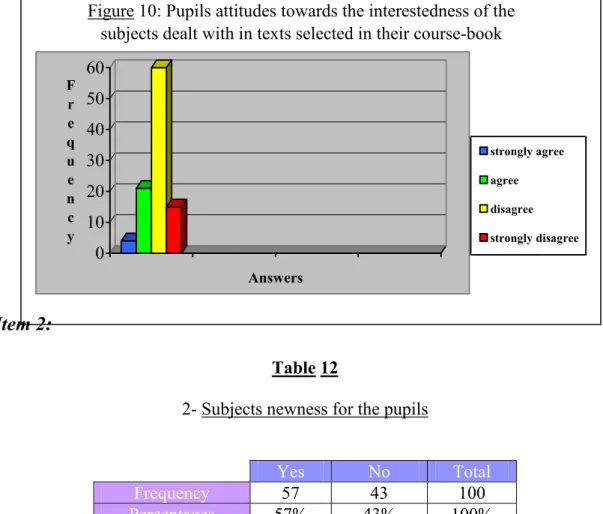P
EOPLE’
SD
EMOCRATICR
EPUBLICO
FA
LGERIAM
INISTRYO
FH
IGHERE
DUCATIONA
NDS
CIENTIFICR
ESEARCHC
OLONELE
L-H
ADJL
AKHDARU
NIVERSITY–B
ATNA–
F
ACULTYO
FL
ETTERSA
NDH
UMANS
CIENCESD
EPARTMENTO
FE
NGLISHF
F
I
I
R
R
S
S
T
T
Y
Y
E
E
A
A
R
R
H
H
I
I
G
G
H
H
S
S
C
C
H
H
O
O
O
O
L
L
S
S
C
C
I
I
E
E
N
N
C
C
E
E
S
S
T
T
R
R
E
E
A
A
M
M
P
P
U
U
P
P
I
I
L
L
S
S
'
'
D
D
I
I
F
F
F
F
I
I
C
C
U
U
L
L
T
T
I
I
E
E
S
S
I
I
N
N
R
R
E
E
A
A
D
D
I
I
N
N
G
G
C
C
O
O
M
M
P
P
R
R
E
E
H
H
E
E
N
N
S
S
I
I
O
O
N
N
C
C
O
O
U
U
R
R
S
S
E
E
S
S
T
TH
HE
E
C
CA
AS
S
E
E
O
O
F
F
A
AB
BD
D
ES
E
S
SA
S
AM
M
ED
E
D
A
AB
BD
D-
-E
EL
L-
-M
MA
AD
D
JI
J
ID
D
H
HI
IG
G
H
H
S
SC
CH
H
OO
O
OL
L
A
AT
T
E
EL
L-
-M
MA
A
DH
D
H
ER
E
R
/
/
B
BA
AT
TN
NA
A
THESISP
RESENTEDI
NP
ARTIALR
EQUIREMENTF
ORA
“
M
AGISTERD
EGREE”
I
NL
ANGUAGEL
EARNINGA
NDC
OMMUNICATIVEC
OMPETENCEP
RESENTED BY:
S
UPERVISED BY:
R
IADHM
EGUELLATIP
R.
M
OHAMEDS
ALAHN
ÉDJAIM
EMBERSO
FT
HEJ
URY:
C
HAIRMAN: D
R.
G
HOUAR OMARS
UPERVISOR: P
R.
M
OHAMEDS
ALAHN
ÉDJAIP
EOPLE’
SD
EMOCRATICR
EPUBLICO
FA
LGERIAM
INISTRYO
FH
IGHERE
DUCATIONA
NDS
CIENTIFICR
ESEARCHC
OLONELE
L-H
ADJL
AKHDARU
NIVERSITY–B
ATNA–
F
ACULTYO
FL
ETTERSA
NDH
UMANS
CIENCESD
EPARTMENTO
FE
NGLISHF
F
I
I
R
R
S
S
T
T
Y
Y
E
E
A
A
R
R
H
H
I
I
G
G
H
H
S
S
C
C
H
H
O
O
O
O
L
L
S
S
C
C
I
I
E
E
N
N
C
C
E
E
S
S
T
T
R
R
E
E
A
A
M
M
P
P
U
U
P
P
I
I
L
L
S
S
'
'
D
D
I
I
F
F
F
F
I
I
C
C
U
U
L
L
T
T
I
I
E
E
S
S
I
I
N
N
R
R
E
E
A
A
D
D
I
I
N
N
G
G
C
C
O
O
M
M
P
P
R
R
E
E
H
H
E
E
N
N
S
S
I
I
O
O
N
N
C
C
O
O
U
U
R
R
S
S
E
E
S
S
T
TH
HE
E
C
CA
AS
S
E
E
O
O
F
F
A
AB
BD
D
ES
E
S
SA
S
AM
M
ED
E
D
A
AB
BD
D-
-E
EL
L-
-M
MA
AD
D
JI
J
ID
D
H
HI
IG
G
H
H
S
SC
CH
H
OO
O
OL
L
A
AT
T
E
EL
L-
-M
MA
A
DH
D
H
ER
E
R
/
/
B
BA
AT
TN
NA
A
THESISP
RESENTEDI
NP
ARTIALR
EQUIREMENTF
ORA
“
M
AGISTERD
EGREE”
I
NL
ANGUAGEL
EARNINGA
NDC
OMMUNICATIVEC
OMPETENCEP
RESENTED BY:
S
UPERVISED BY:
R
IADHM
EGUELLATIP
R.
M
OHAMEDS
ALAHN
ÉDJAIM
EMBERSO
FT
HEJ
URY:
C
HAIRMAN: D
R.
G
HOUAR OMARS
UPERVISOR: P
R.
M
OHAMEDS
ALAHN
ÉDJAID
EDICATIONA
CKNOWLEDGMENTSBefore all I thank Allah
My deepest gratitude and my most sincere thanks go to:
Firstly, my supervisor Pr. Mohamed Salah Nédjai, you have given me the
chance of a lifetime, thanks for your patience, gentleness, and constant
care.
Secondly, my gratitude goes to the members of the jury who accepted to
examine and evaluate my work.
Thirdly, Dr. Ghouar, Mr. Kaouli for their unlimited care and salutary
contribution.
I’m also much grateful to my uncle Saleh, my cousin Salim and his wife
Sabah, my cousin Abderrezak for their help.
Last, but not least, my special thanks go to my family for their
unconditional help and support.
THE OUTLINE Contents Pages Dedication Acknowledgements Abstract………..I List of tables ……….……..II List of figures……….III
Introduction
A- Statement of the problem ………. 01
B- Hypotheses ……….……….. 02
C- Background and significance of the study.………... 02
D- Objectives of the study……… 04
PART ONE: THEORETICAL WORK
CHAPTER ONE: THE RESEARCH METHODOLOGY DESIGN Introduction……….07I.1- Aims of the research methodology………...08
I.2- The research method……….………09
I.3- Participants………..10
I.3.1- The population ……….10
I.3.2- The sample……….11
I.4- The instruments……….12
I.4.1- Pupils’ questionnaire ………12
I.4.3- Reliability of instruments……….13
I.4.3.1- Questionnaires……….13
I.4.3.2- Questionnaires’ design………14
I.4.3.3- Piloting……….15
I.5- Scope and limitations……….16
Conclusion……….……….17
CHAPTER TWO: THE READING PROCESS Introduction……….19
II.1- A definition of reading……….………20
II.1.1- Reading as interpretation of experience………20
II.1.2- Reading as interpretation of graphic symbols………21
II.2- The word identification process (encoding) ………...22
II.3- The comprehension process (decoding) ………….………24
II.3.1- Smith’s views of comprehension……….25
II.3.2- Levels of understanding………..27
II.3.3- The surface and deep structure of language……….27
II.4- The semantic and syntactic context in reading……….29
II.4.1- Semantic processing………29
II.4.2- Syntactic processing………30
II.5- Models of reading………..31
II.5.1- Bottom-up………31
II.5.2- Top-down………33
II.5.3- Interactive………34
CHAPTER THREE: VARIABLES THAT AFFECT READING COMPREHENSION
Introduction.……….…38
III.1- first language reading, foreign language reading………40
III.1.2- variables that affect reading comprehension..………..………41
III.1.2.1- interest ……….………42
III.1.2.2- exploitability ……….……….………..43
III.1.2.3- readability ……….…43
III.1.2.3.1- lexical knowledge………..………..44
III.1.2.3.2- background knowledge………..…..….46
III.1.2.3.3- linguistic competence………..………...47
III.1.2.3.4- organization………..……….48
III.1.2.3.5- discourse phenomena………..…………49
III.1.2.3.6- length of passage………..………50
III.1.2.4- topic ………50
III.1.2.5- political appropriateness ……….…51
III.1.2.6- cultural suitability ………51
III.1.2.7- appearance ……….……….…52
PART TWO: FIELD WORK
CHAPTER FOUR: PUPILS’ QUESTIONNAIRE
Introduction.………....56
IV.1- Participants and procedures………..………..57
IV.2- Questionnaire administering…….…..………..57
IV.3- Questionnaire analysis and presentation…….………58
Section I: Item 1.………...58 Item 2.………...59 Item 3.………...60 Item 4.………...61 Section II: Item 1.………...62 Item 2.………...63 Item 3.………...64 Item 4.………...65 Item 5.………...66 Item 6.………...67 Section III: Item 1.………...68 Item 2.………...69 Item 3.………...70 Item 4.………...71
Section IV: Item 1.………...72 Item 2.………...73 Item 3.………...74 Item 4.………...75 Item 5.………...76 Item 6.………...78
IV.4- Discussion of the findings.………79
Conclusion.………...82
CHAPTER FIVE: TEACHERS’ QUESTIONNAIRE
Introduction.………....84
V.1- Participants and procedures………..………..85
V.2- Questionnaire administering…….…..………..85
V.3- Questionnaire analysis and presentation…….………86
Section I: Item 1.………...86 Item 2.………...87 Item 3.………...88 Section II: Item 1.………...89 Item 2.………...90 Item 3.………...91 Item 4.………...92 Item 5.………...93
Section III: Item 1.………...94 Item 2.………...95 Item 3.………...96 Item 4.………...97 Item 5.………...98 Section IV: Item 1.………...99 Item 2.………...100 Item 3.………...100
V.4- Discussion of the findings.………102
Conclusion.………...104
Recommendations.……….………105
Conclusion .……….………107
Bibliography .………...109 Appendices:
Appendix 1 : Pupils’ questionnaire Appendix 2 : Teachers’ questionnaire
-I- ABSTRACT
Every day, schools all over the world deal with the problem of recognizing the characteristics of pupils with learning difficulties and deciding how to help them. These pupils present high-level learning difficulties that affect their performance in a variety of school tasks. A typical characteristic of such pupils is often their difficulty in understanding a written text. In many cases, despite good intellectual abilities, a superficial ability to cope with written texts and to use language appropriately, some pupils cannot find their way in the written texts they must read. They do not seem to grasp the most important elements, the connections between the different parts, or to be able to search out the pieces of information they are looking for. Sometimes these difficulties are not immediately detected by the teacher in the early school years. This may be because the first texts a pupil encounters are quite simple (sentences, short stories, etc.) with which the pupil is already familiar. However, as years go by and texts get more and more complex, comprehension difficulties will become increasingly apparent and increasingly detrimental to effective school learning.
Written text comprehension is one of the abilities that is most often evaluated in schools all over the world, including Algeria. And every day teachers deal with pupils who have not completely understood what they have
read. It is difficult to doubt the existence and the importance of the problem. Hence, this work is an attempt to handle reading comprehension at high schools, and aims at investigating the causes behind pupils’ lack of understanding during reading courses. The research will be conducted on first year pupils at EL-MADHER High school.
The introductory chapter demonstrates the methodology followed in conducting this research. Chapter two, “The Reading Process.” This chapter describes important issues in reading: what is reading? What is the role of word recognition and comprehension? What are the surface and deep structure in reading? What are the roles of semantic and syntactic contexts? What model, the bottom-up, the top-down, or the interactive, best explains what happens in reading. Chapter three, “Variables That Affect Reading Comprehension.” Investigates the main variables that affect reading. Within the reader: aspects of the person doing the reading. And will look also at those aspects of the text to be read. Part two is made of two chapters: The analysis of the results obtained from the questionnaire; which evaluates pupils’ attitudes towards reading comprehension, is the core of the fourth chapter. Finally, chapter five is the analysis of the results obtained from teachers’ questionnaire.
-II-
LIST OF TABLES:
CHAPTER FOUR:
Table 01 : English is a very important language……….58
Table 02 : Pupils attitudes towards English language courses………..59
Table 03 : Pupils dislikes in English language courses………60
Table 04 : Other things that pupils hate in English language courses………61
Table 05 : Pupils reading at home………62
Table 06 : Pupils reading at class………..63
Table 07 : Pupils attitudes towards reading comprehension courses………..64
Table 08 : Pupils’ reading comprehension levels………..65
Table 09 : Pupils attitudes towards the nature of the texts included in their course-book…….66
Table 10 : Pupils attitudes towards the newness of the words used in their course-book……..67
Table 11 : Pupils attitudes towards the interestedness of the subjects dealt in texts selected in their course-book……….68
Table 12 : Subjects newness for the pupils………..69
Table 13 : Subjects preferred by the pupils……….70
Table 14 : Why subjects concerning our culture ?...71
Table 15 : Why subjects concerning foreign culture ?...71
Table 16 : Why subjects concerning both cultures ?...72
Table 17 : Pupils understanding of the main idea of the texts………..72
Table 18 : Pupils understanding of the sub ideas of the texts………73
Table 19 : pupils’ attitudes towards time allocated for reading courses……….74
Table 20 : Pupils understanding of the questions concerning the texts………...75
Table 21 : Pupils’ reasons behind the wrong answers given to the questions………...76
Table 22 : Suggestions………...78
CHAPTER FIVE: Table 23 : The choice of teaching as a profession...86
Table 24 : The period of teaching English language at high school………..87
Table 25 : Teachers reading out of the classroom………..88
Table 26 : Teachers’ perception of their pupils………89
Table 27 : Teachers’ attitudes towards their pupils’ interestedness in reading………..90
Table 28 : Teachers’ attitudes towards their pupils’ background knowledge……….91
Table 29 : Teachers’ attitudes towards their pupils’ vocabulary……….92
Table 30 : Teachers’ attitudes towards their pupils master of syntactic constructions………...93
Table 31 : Teachers’ perception of the texts included in the course-book………94
Table 32 : Teachers’ perception of the texts’ length...95
Table 34 : Why subjects are not interesting ?...97
Table 35 : Why subjects are not interesting ?...97
Table 36 : Subjects preferred by the teachers………...98
Table 37 : Teachers’ attitudes towards time allocated to reading comprehension………....99
Table 38 : Teachers’ attitudes towards the way reading comprehension is taught………….….100
-III-
LIST OF FIGURES:
CHAPTER FOUR:
Figure 01 : English is a very important language……….59
Figure 02 : Pupils attitudes towards English language courses………..60
Figure 03 : Pupils dislikes in English language courses………61
Figure 04 : Pupils reading at home………....62
Figure 05 : Pupils reading at class………..63
Figure 06 : Pupils attitudes towards reading comprehension courses………..64
Figure 07 : Pupils’ reading comprehension levels………..65
Figure 08 : Pupils attitudes towards the nature of the texts included in their course-book…….66
Figure 09 : Pupils attitudes towards the newness of the words used in their course-book……..67
Figure 10 : Pupils attitudes towards the interestedness of the subjects dealt in texts selected in their course-book……….68
Figure 11 : Subjects newness for the pupils………..69
Figure 12 : Subjects preferred by the pupils……….70
Figure 13 : Pupils understanding of the main idea of the texts………..73
Figure 14 : Pupils understanding of the sub ideas of the texts………74
Figure 15 : pupils’ attitudes towards time allocated for reading courses……….75
Figure 16 : Pupils understanding of the questions concerning the texts………...76
Figure 17 : Pupils’ reasons behind the wrong answers given to the questions………...77
CHAPTER FIVE: Figure 18 : The choice of teaching as a profession...87
Figure 19 : The period of teaching English language at high school………..88
Figure 20 : Teachers reading out of the classroom………..89
Figure 21 : Teachers’ perception of their pupils………90
Figure 22 : Teachers’ attitudes towards their pupils’ interestedness in reading………..91
Figure 23 : Teachers’ attitudes towards their pupils’ background knowledge……….92
Figure 24 : Teachers’ attitudes towards their pupils’ vocabulary……….93
Figure 25 : Teachers’ attitudes towards their pupils master of syntactic constructions………...94
Figure 26 : Teachers’ perception of the texts included in the course-book………95
Figure 27 : Teachers’ perception of the texts’ length...96
Figure 28 : Teachers’ attitudes towards subjects’ interestedness………97
Figure 29 : Subjects preferred by the teachers………...98
Figure 30 : Teachers’ attitudes towards time allocated to reading comprehension………....99
Figure 31 : Teachers’ attitudes towards the way reading comprehension is taught……….100
INTRODUCTION
A.STATEMENT OF THE PROBLEM:
Reading is an important source of acquiring knowledge and language as well, and thus it is highly considered by both teachers and program designers. Despite of the fact that the teaching resources, books, include lots of reading passages, teachers encounter problems of pupils’ lack of understanding and low achievement in reading comprehension tasks.
The present research intends to deal with reading comprehension and aims at unveiling the causes of the difficulties encountered by pupils in reading comprehension which, in their turn, lead to pupils’ bad achievement in tests. Thus our research attempts to answer the following questions:
¾ Do pupils fail in reading comprehension because of the lack of background knowledge?
¾ Do pupils fail in reading comprehension because of low linguistic competence?
¾ Do the reading passages fit the pupils’ tastes (interests)?
¾ Do pupils fail in reading comprehension because of their mother tongue interference?
¾ Do the difficulties lie in the time given to the reading comprehension courses?
B.HYPOTHESES:
We started our research with the attempt to answer the questions highlighted above, as follows:
Hypothesis 1:
We assume that first year pupils’ difficulties in reading comprehension at El-madher high school are caused by the lack of background knowledge.
Hypothesis 2:
We assume that these difficulties in reading comprehension are due to low linguistic competence.
Hypothesis 3:
We assume that these difficulties in reading comprehension are due to the texts which are not interesting.
Hypothesis 4:
We assume that these difficulties in reading comprehension are due to the short time allocated for reading courses.
C.BACKGROUND AND SIGNIFICANCE OF THE STUDY:
Written text comprehension is one of the abilities that is most often evaluated in schools all over the world. And every day teachers deal with pupils who have not completely understood what they have read. It is difficult to doubt the existence and the importance of the problem. Great efforts have been made to investigate the different processes of text comprehension. On the
other hand, scare interest has been paid to subjects who have comprehension difficulties.
Cesare Cornoldi (1996), introduced the following statement explaining the importance of the problem:
“Today, good reading comprehension remains the
most important key for school learning. In fact, every subject requires the processing of texts, their further elaboration and assimilation. The typical profile of a pupil with a reading comprehension problem (sometimes defined as a "poor comprehender") describes pupils who are slow in learning because they are not able to learn at the same rate as their classmates from lectures and textbooks. In general, teachers and administrators frequently rate the learning ability of their pupils, coming to the conclusion that many of them experience severe problems. If we were to use these assessments to estimate the proportion of pupils with a reading comprehension problem, we would arrive at the conclusion that the problem is very common and relevant in schools.”
The great impact that reading has on language learning has pushed everyone who belongs to the foreign language teaching/learning field to think about the fruitful methods to realize the objective set before, mainly if we
know that our country is willing to reach an advanced level in foreign languages teaching, especially English language teaching, since it is the dominating language in our world. To do this, we need first to detect and describe the difficulties faced by the subjects doing the reading task, in addition to the analysis of the variables that affect the reading process in order to help in finding the effective way out for this problem.
D.OBJECTIVES OF THE STUDY:
The present research intends to reach the possible set of the precious information that can be gathered from the pupils and their teachers in order to reach a better understanding of the difficulties in reading comprehension.
Hence, we contribute in paving the way for teaching reading comprehension skills to learners of English as a foreign language with fruitful results by the suggestion of some solutions.
CHAPTER ONE:
THE RESEARCH METHODOLOGY DESIGN
Introduction……….07
I.1- Aims of the research methodology………...08
I.2- The research method……….………09
I.3- Participants………..10
I.3.1- The population ……….10
I.3.2- The sample……….11
I.4- The instruments……….12
I.4.1- Pupils’ questionnaire ………12
I.4.2- Teachers’ questionnaire……….12
I.4.3- Reliability of instruments……….13
I.4.3.1- Questionnaires……….13
I.4.3.2- Questionnaires’ design………14
I.4.3.3- Questionnaire administering …..………14
I.4.3.4- Piloting……….15
I.5- Scope and limitations……….16
INTRODUCTION
Research in foreign language teaching/learning allows us to identify problems and find solutions. It allows us to develop new methods and find better ways to prevent learners getting problems in acquiring a new language. It provides evidence that can then be used by program designers and teachers as well to choose the fruitful curriculum. R. C. Bradly says (Research in Education, P 1):
“All educators can benefit from the knowledge of the nature, techniques, and procedures of scientific research. In the first place; this knowledge is useful because these skills will enable classroom teachers and other professionals to utilize scientific methods in attacking their own practical problems. Secondly, research knowledge is essential because it can furnish school personnel with the information necessary to make objective decisions concerning curriculum, methods, administrative procedures, and so on. Thirdly, knowledge of research permits the educators to be both a consumer and producer of research. It seems logical to assume that those who borrow from the research
reservoir will desire to contribute to the ever increasing supply of valid knowledge of education through research.”
In this research, we attempt to recognize what makes pupils of first year at the high school of El-madher face some difficulties as far as reading comprehension is concerned. To unveil the causes behind such problem we need to know the attitudes and perceptions of the pupils and the teachers as well towards these difficulties, and try to come out with what we think are good answers of this problem in order to lessen those difficulties.
To reach the aims of our research, we have to follow some steps starting from data collecting & choosing sources, passing through the method used in this research, and ending by the instruments and the participants of our study.
I.1-AIMS OF THE RESEARCH METHODOLOGY:
Broadly talking research process has to be formal, systematic, and intensive used in the investigation of a problem (R. C. Bradly 1971, p. 2),
“…thus, research is a formal, systematic, intensive process used in the investigation of a problem.”
In other words, research is a structured inquiry that uses acceptable scientific methodology to solve problems and create new knowledge (UNISA, 2003: p. 5). Thus, our aim through the investigation of our research is to add as
objectively as possible some new knowledge in the field of foreign language teaching/learning, as reading comprehension is concerned,
“…an important attribute of a researcher is the ability to be objective, he reports what he finds irrespective of his feelings about the results obtained.” (Research in Education, 1971)
with the following intentions:
9 Highlight the main causes behind first year pupils’ difficulties in reading comprehension courses at El-Madher high school.
9 Analyze and explain the results obtained from the data collected.
9 Suggest some solutions based on the results gained from pupils and teachers attitudes towards the problem.
Taken as a whole, the aim of our study is to contribute in improving reading comprehension as part of English language teaching/learning as a foreign language in our schools.
I.2- THE RESEARCH METHOD:
Since descriptive research is designed to determine the facts of current situation and thereby to clarify status. It is found that the descriptive method is suitable for this study. Thus, it is a situation that may be surveyed and interpretively described in terms of all available facts (James W. Turner, &
John Curry, 1971). Moreover, the discussion and the interpretation of the data collected is necessary here, because the descriptive method in research is not only a matter of collecting data about a specific situation, but needs to be discussed and adequately interpreted. J. W. Turner & J. Curry said at this level:
“The beginning researcher should realize that descriptive research is more than just a collection of data; it is not research unless discussion of the data is extended to the level of adequate interpretation.”
In the current study, we are dealing with a situation where first year pupils at the high school are facing difficulties in their reading comprehension courses. Thus, the descriptive method is the most suitable expectantly to end after the description of the situation, with some recommendations that hopefully be used in the future at the improvement of the fruitful teaching/learning of reading comprehension tasks.
I.3-PARTICIPANTS : I.3.1-THE POPULATION:
The present research needs to be conducted on two populations: the pupils and the teachers. Both of them will be concerned with a questionnaire, one for the teachers and one for the pupils.
Concerning the population of the pupils, it is made of first year science stream pupils at El-Madher high school, who are three groups the equivalent of one hundred pupils. (literary stream is not concerned since the curriculum is not the same).
The population of the teachers needed for this study is made of nine teachers, all teachers of English language at El-Madher high school (including its annexe).
I.3.2-THE SAMPLE:
The sample of our research is made of all the populations of both pupils and teachers, for two reasons: the first, is that our population is not very large which wouldn’t in fact be a waste of resources (considerable amount of time, cost, and effort), and the second reason, is that the more the sample is larger, the better the suggestions are closer to come up with accurate results and effective solutions, since we are going to investigate the attitudes and perceptions of both populations, teachers and pupils.
Thus, we are going to take all first year science stream groups of pupils the equivalent of one hundred pupils for the first questionnaire. And for teachers questionnaire we are going to take all the teachers of English language at El-Madher high school.
I.4-THE INSTRUMENTS:
The focus will be on two questionnaires employed as research instruments for measurement purposes to collect reliable and valid data. The first questionnaire is designed for pupils, and the second is for teachers.
Factual questions which are concerned with facts about the teachers and their learners’ language learning process, and attitudinal questions which are employed to find out what pupils and teachers think, are used to collect data suited for quantitative analysis.
I.4.1-PUPILS’ QUESTIONNAIRE :
Pupils’ questionnaire is designed for all first year science stream pupils at El-Madher high school. It is divided into four sections including twenty items (see Appendix 1). More detailed information about the questionnaire’s implementation is presented in chapter four.
I.4.2-TEACHERS’ QUESTIONNAIRE :
teachers’ questionnaire is designed for all teachers of English language at El-Madher high school including its annex. It is divided into four sections
including sixteen items (see Appendix 2). More detailed information about the questionnaire’s implementation is presented in chapter five.
I.4.3-RELIABILITY OF INSTRUMENTS :
In any research, accuracy in measurement is of great importance. One of the questions posed here was "How can the quality of the data be maximized to a considerable extent?", the quality of data reflects the reliability of the measurement used. If one cannot trust the measures, one cannot trust any analysis that uses those measures. The reliability of a research instrument concerns the extent to which the instrument yields the same results on repeated trials.
I.4.3.1-QUESTIONNAIRES :
Because of the essence of scientific research is trying to find answers to questions in a systematic manner, it is no wonder that questionnaires has become one of the most popular research instruments applied in the human sciences.
Constructing a good questionnaire involves a series of steps and procedures, including:
9 Deciding on the general features of the questionnaire, such as the length, the format, and the main parts.
9 Writing effective items/questions. 9 Selecting and sequencing the items. 9 Writing appropriate instructions.
9 Piloting the questionnaire and conducting item analysis.
I.4.3.2-QUESTIONNAIRES’ DESIGN :
The questionnaires were designed with particular attention aiming at guaranteeing as high as possible appropriateness, preciseness, intelligibleness, unbiasedness, and relevance.
Social Connectedness Scale (SCS); A modified version of the scale, originally developed by Lee and Robbins (1995), was used for this study. We modified this scale to specifically measure connectedness to the reading courses. Pupils indicated on a four point scale type the degree to which they agreed or disagreed with each statement (1= strongly agree; 4= strongly disagree). Also, we have used varied questions to collect as useful as possible data.
I.4.3.3-QUESTIONNAIRES ADMINISTERING:
In foreign language teaching/learning research, group administration is the most common method of having questionnaires completed. One reason for this is that the typical targets of the questionnaires are language learners studying within institutional contexts, and it is often possible to arrange to administer the instrument to them while they are assembled together, for example, as part of a lesson or between certain other organized activities. The
other reason for the popularity of this administration format is that it can overcome some of the problems related to postal questionnaires or one-to-one administration. Groups of students are typically 'captive groups' in the sense that a response rate of nearly 100% can be achieved with them. There are, however, some important points to consider:
9 With larger groups more than one field worker at a time is needed to help to answer questions and to distribute/collect the questionnaires. 9 Oppenheim (1992) also warns us that in group administration
'contamination' through copying, talking, or asking questions is a constant danger.
9 The negative influence of deviant pupils may create an inappropriate climate for sincere and thoughtful work.
I.4.3.4-PILOTING :
Because in questionnaires so much depends on the actual wording of the items (even minor differences can change the responses) an integral part of questionnaire construction is field testing, or piloting. Pupils’ questionnaire was piloted once on a sample of thirty pupils (ten pupils from each class were chosen randomly) who are similar to the target sample the instrument had been designed for. Teachers’ questionnaire was piloted at various stages of its development on a sample of two teachers. These trials allowed us to collect feedback about how the instrument worked and whether it performed the job it had been designed for.
Piloting can highlight questions:
9 Whose wording may be ambiguous ?
9 Which are too difficult for the respondent to reply to ?
9 Which may, or should be, eliminated because, contrary to the initial expectations, they do not provide any unique information or because they turn out to measure something irrelevant ?
Piloting can also indicate problems concerning the administration of the questionnaire; and Valuable feedback can also be gained about:
9 The overall appearance of the questionnaire. 9 The clarity of the instructions.
9 The length of time necessary to complete the instrument.
I.5-SCOPE AND LIMITATIONS :
Investigating human being attitudes and thinking towards a subject matter is not that easy task. To ensure a high level of consistency and to eliminate high range of bias is difficult, and need great efforts to be spent. Through the present research, definite programmes, schemes, methods of instruction for immediate schoolroom use can not be deduced. Our focus here is to highlight those factors lying beneath pupils’ difficulties in reading comprehension courses. The game in reading is comprehending a text
(perffetti, 1985, p.13) and reading is not merely pronouncing the words but understanding the text and developing a cognitive representation of the text (Emerald, 1991, p. 4). Thus, when you realise that there is a failure concerning comprehension of texts read, a quick intervention is needed to spot the causes of the problem, and as it is said, it may not be so much what are we doing wrong but rather what are we not doing right. So, the attempt is done to hopefully answer this question.
CONCLUSION:
Earth needs to be cultivated with great attention; a considerable amount of time, cost, an effort is spent in order to gather the harvest. The same steps; if not more, are needed to be done with research in human sciences field, this latter namely the one concerned with teaching/learning of a foreign language is at the same time interesting and not easy to be done.
All what is said as far as this chapter is concerned is a modest effort spent to explain all what have a relation with our research; methods, steps, instruments, and objectives to reach a satisfactory level in reading comprehension for learners of English as a foreign language at the high school.
CHAPTER TWO:
THE READING PROCESS
Introduction……….19 II.1- A definition of reading……….………20 II.1.1- Reading as interpretation of experience………20 II.1.2- Reading as interpretation of graphic symbols………21 II.2- The word identification process (encoding) ………...22 II.3- The comprehension process (decoding) ………….………24 II.3.1- Smith’s views of comprehension……….25 II.3.2- Levels of understanding………..27 II.3.3- The surface and deep structure of language……….27 II.4- The semantic and syntactic context in reading……….29 II.4.1- Semantic processing………29 II.4.2- Syntactic processing………30 II.5- Models of reading………..31 II.5.1- Bottom-up………31 II.5.2- Top-down………33 II.5.3- Interactive………34
INTRODUCTION
Many of the people concerned with language teaching/learning ignore the values of reading and its impact on other skills. In fact, reading is a key to success in school, a key to the development out of the school, a key to the enjoyment of leisure time. Indeed, reading is so interrelated with the total educational process that educational success requires successful reading. But why do we need another research on reading and on the teaching of reading comprehension? The simplest answer to this question is that, despite the effort spent on the improvement of reading skill, there are unfortunately many of those pupils who face great difficulties, and have less abilities to cope with reading comprehension tasks. Thus, our study is meant to investigate and to spot the important issues that underlie the reading process in order to help in the analysis of the data collected from pupils and teachers. For this, Chapter two examines those important issues in reading: What is reading? What is the role of word recognition and comprehension? What are the surface and deep structure in reading? To what extent is reading a thinking process? Is reading only a psycholinguistic guessing game or is it something more? What are the roles of the semantic and syntactic contexts? What model, the bottom-up, the top-down, or the interactive, best explains what happens in reading? And so on.
II.1 A DEFINITION OF READING
Definitions of reading are generally divided into two major types: (a) those that equate reading with interpretation of experience generally, and (b) those that restrict the definition to the interpretation of graphic symbols. The first is a broader category and encompasses the second; most reading definitions are related to one or both. Let us consider more closely some of the definitions which make up these categories.
II.1.1 READING AS INTERPRETATION OF EXPERIENCE
With the first type of reading definition, in which reading is equated with the interpretation of experience generally, we might speak of reading pictures, reading faces, or reading the weather. Dechant said:
“We read a squeaking door, a clap of thunder, a barking dog, or another's facial expressions. The detective reads clues, the geologist reads rocks, the astronomer reads stars, the doctor reads the symptoms of illness, and the reading teacher reads the symptoms of reading disability”.
The definition of reading that came out of the Claremont College Reading Conference fits this first category. In the Conference's Eleventh Yearbook, Spencer ( 1946) wrote,
"In the broadest sense, reading is the process of interpreting sense stimuli. . . . Reading is performed whenever one experiences sensory stimulation" (p. 19).
Benjamin Franklin in 1733 in Poor Richard's Almanac had such a definition in mind when he wrote:
"Read much, but not too many books"
An important implication of the definition of reading as interpretation of experience is that pupils must be readers of experience before they can become readers of graphic symbols. They must first be readers of the world. Pupils cannot read symbols without having had those experiences that give the symbol meaning.
II.1.2 READING AS INTERPRETATION OF GRAPHIC SYMBOLS
Turn now to the second type of definition of reading which equates reading with the interpretation of graphic symbols. Most definitions of reading given in professional textbooks are of this second type. Writers have furnished us with multiple descriptions of reading. They have described reading as
involving the comprehension and interpretation of the symbols on the page ( Harris -Sipay, 1975, 1985); as a complex interaction of cognitive and linguistic processes with which readers construct a meaningful representation of the writer's message ( Barnitz, 1986); or as giving significance intended by the writer to the graphic symbols by relating them to what the reader already knows ( Anderson, Hiebert, Scott, & Wilkerson, 1985; Dechant, 1964, 1970, 1982; Duffy & Roehler, 1986).
Reading is also described as the reconstruction of the message encoded graphically by the writer; as constructing meaning from print ( Gillett & Temple, 1986); as making sense of written language ( Gillett & Temple, 1986); and as a process of information search or information processing. It is described as an interactive process involving both the reader's previous fund of knowledge and the words in the text; it is a process of putting the reader in contact and in communication with the ideas of the writer which are cued by the written or printed symbols; it is a process of building a representation or a mental model of text ( Perfetti, 1985). Reading means building a representation of text by relating what is on the page to one's own fund of experience. When the reader's representation of text essentially approximates that of the writer, genuine reading occurs (Dechant, 1991).
Reading is additionally described as a synthesis or integration of word identification and comprehension, in which the absence of either makes true reading impossible.
In reading, the obvious need is that the words on the page be identified and recognized by the reader. Reading begins as a sensory process and as a word identification process. Word identification or encoding of the printed word involves three basic processes: visual discrimination and identification of the symbols; visual memory for the symbols; and, generally recoding, pronunciation of the symbols, or association of sound with the symbols.
The purpose of all communication is the sharing of meanings; the purpose of all reading is comprehension of meanings. But it is the symbols or words that must carry the burden of meaning between the communicators. The written symbols are the writer's tools for awakening meaning in the reader. Communication through writing and its reciprocal, reading, requires such a sign system. Without the graphic input there can be no reading. Good readers often are such because they are capable of rapid and accurate word recognition. They have automatized the word identification skills. They have committed thousands of words to their sight or recognition vocabulary and can recognize them instantly with minimum language cues.
II.3 THE COMPREHENSION PROCESS (DECODING)
We have to note that the central purpose of all reading is the comprehension of meaning. Reading is thus more than word identification. If reading was simply a word-identification or word-naming process, pupils would be good readers when they could identify the word immediately at sight or when they could recode or name the printed symbols or words. Reading is more than the ability to identify or to pronounce the words on the printed page, or to go from the graphic to the spoken code. It is more than giving the visual configuration a name. This is recoding, but is not decoding. Decoding requires the reader to reconstruct the message encoded graphically by the writer. Decoding occurs only when meaning is associated with the written symbols and only when the meaning that the writer wanted to share with the reader has been received.
“It is not enough to put one's own stamp of meaning on the words. The reader must follow the thought of the writer”
Comprehension occurs only when the reader's construction or representation of text agrees substantially with the writer's representation or his intended message. Only then does true communication via reading take place.
Hittelman and Hittelman ( 1983) note that:
"reading is the process of reconstructing from printed patterns the ideas and information intended by the author" (p. 4).
In a later text (1988), Hittelman says:
"Reading entails both reconstructing an author's message and constructing one's own meaning using the print on the page. A reader's reconstruction of the ideas and information intended by an author is somewhat like a listener's reconstruction of ideas from a speaker's combinations of sounds" (p. 2).
In the same text Hittelman notes that:
"Reading comprehension is partly the reconstruction of an author's intended meaning" (p. 416).
Throughout this research we have singled out Frank Smith's views because of his influence on the understanding of reading in the last 15 to 20 years. Smith (1988) observes that comprehension is:
"the basis of reading and learning to read" (p. 6)
He said that cognitive structure, which he terms non-visual information, determines whether the reader comprehends or not. From his perspective, comprehension is directly related to the amount of non-visual information, in other words, to what the reader knows. Comprehension for Smith (1988) is:
"the possibility of relating whatever we are attending to in the world around us to the knowledge, intentions, and expectations we already have in our heads" (p. 53).
Smith further defines comprehension as identification and apprehension of meaning, and as
"making sense of print," (p. 54).
It is of course true that a reader's difficulty is that he cannot make sense of what he is reading, but from another perspective it appears also clear that the reader's problem would be alleviated if he was more efficient in identifying the words. Smith himself intimates as much when he writes:
"Comprehension requires sharing knowledge with the author about the manner in which a text is conventionally constructed" (p. 226).
II.3.2- LEVELS OF UNDERSTANDING :
We turn our attention now to the levels of comprehension:
9 The encoding of the meaning of a single word is the most elemental form of comprehension. Just and Carpenter ( 1987) note that the first problem readers face is to encode the word and then to access its meaning in their internal or mental lexicon. The meaning of the single word or the word concept is the knowledge about a word that is stored in the brain and the representation or concept associated with the word.
9 The encoding of the meaning that is appropriate to the context is a second level of comprehending. It is at this point that semantic and syntactic contexts start to play a critical role in comprehension.
9 A third level is comprehending units of increasing size: phrases, sentences, paragraphs, and total text. Readers must be able to extract
meaning from units larger than a single word, phrase, or sentence. They must be able to develop a representation of extended text, of paragraphs and multiple paragraphs.
II.3.3- THE SURFACE AND DEEP STRUCTURE OF LANGUAGE:
Psycholinguists have termed the graphic cue system "the surface structure" and have identified meaning with the "deep structure". They affirm that meaning resides in the deep structure of language, and they maintain that the two levels of language (the surface and deep structure) are related in a complex way through a grammar implicit in each reader, which is termed transformational grammar and which, as Smith ( 1988) observes, cannot be taught explicitly.
The deep structure refers to the meaning, and comprehension may be described as the translation of the surface structure into the deep structure. The surface structure includes the number, size, and contrast of the printed marks on the page.
According to Smith ( 1988),
“surface structure is the visual information of written language; it is the source of information that is lost to the reader when the lights go out.”
The surface structure refers to the observable features of language. It includes the syntactic form that the sentence takes. And meaning does not lie at the surface of language, but rather in the mind of the reader, or in what linguists term the within-brain context. In other words meaning is not implicitly contained in the printed or written marks on the page. The evidence overwhelmingly supports the view that the meanings brought to the surface structure differ from individual to individual and in the same individual from time to time.
II.4- THE SEMANTIC AND SYNTACTIC CONTEXT IN READING:
To comprehend, readers must access and process the semantic and syntactic information contained in words and sentences: they must associate semantic meaning (a meaning acquired through experience and conceptualisation) and syntactic meaning (a meaning inherent in language structures) with the symbols. In other words, there are two basic contexts in reading, the semantic and the syntactic, and readers must use both of them if they expect to be good readers.
II.4.1- SEMANTIC PROCESSING:
When readers associate meaning with symbols, a meaning that they have acquired through experiences, they are utilizing a semantic cue, are doing semantic processing, and are making use of the semantic context. Semantic cues are meaning-bearing cues based on experiences. When pupils "read" the
word cat and can pronounce the word as /kăt/ , they are still not yet reading. Readers must take meaning to the symbols. They must call upon their previous experiences with cats and associate these experiences with the printed symbol. The real live cat thus is the referent for the word cat.
Reading thus is correctly described as the process of giving the significance intended by the writer to the graphic symbols by relating them to one's own fund of experiences ( Dechant, 1964, p. 12). Clearly, comprehension comes from the reader's fund of experience and is actually supplied by readers as they process symbols by relating them to experience. We read in order to gain experience, and yet it is also true that we get more out of reading if we have more experience. pupils cannot be good readers if their past experiences have not furnished them with a cognitive base relevant to the information contained in a particular written communication.
II.4.2- SYNTACTIC PROCESSING:
Readers must process the graphic-semantic cues, but this step needs to be supplemented by syntactic processing. To be a good reader, it is not enough to process the semantic context, or to focus on the semantic or referential meaning. Readers must also process the syntactic context; they must use language structure to decode meaning.
Good ‘comprehenders’ are such because they can process total language structures that are termed phrases, sentences, and paragraphs, and not simply
words, to decode meaning. They see the grammatical relations among the words in phrases, clauses, and sentences. They have more experience with and knowledge of language structure, of syntactic usage.
Lefebvre ( 1962, 1964), a linguist, started the emphasis on the significance of language structures for reading comprehension. He emphasized that the grasp of meaning is integrally linked to the processing of these language structures in a sentence. He pointed out that:
“syntactic cues, both the morphological or intra-word cues (such as inflectional endings, contractions, prefixes, suffixes, and accent) and the inter word cues (such as word order, function words, and punctuation) affect meaning. Thus, the addition of s to a word (cats, hits, Mary's) changes the meaning of the words; the prefix trans changes the meaning of the root port in transport; and the addition of the suffix fy changes false to falsify and creates a new meaning.”
II.5- MODELS OF READING:
Since reading deals with word recognition and comprehension, there is some question whether pupils use or should use a bottom-up approach to comprehension and reading, a top-down approach, or an interactive model.
II.5.1- BOTTOM-UP:
Bottom-up models operate on the principle that the written text is hierarchically organized (i.e., on the grapho-phonic, phonemic, syllabic, morphemic, word, and sentence levels) and that the reader first processes the smallest linguistic unit, gradually compiling the smaller units to decipher and comprehend higher units (e.g., sentence syntax). The emphasis in this approach is on text processing. In the bottom-up models, if the text processing falls down anywhere on the hierarchical ladder, remediation is applied at this point. Bottom-up models, at least in the beginning stages, give little emphasis to the influences of the reader's world knowledge, contextual information, and other higher-order processing strategies.
Gove ( 1983) suggests that advocates of the bottom-up strategy believe that: 9 readers must recognize each word in a selection to comprehend the
selection
9 readers should give primary emphasis to word and sound/ letter cues in identifying unrecognised words
9 reading acquisition requires a mastery of a series of word-recognition skills
9 letters, letter/sound relationships, and words should receive primary emphasis in instruction
9 accuracy in recognizing words is significant 9 knowledge of discrete sub skills is important.
The reader thus first learns to identify letter features, links these features to recognize letters, combines letters to recognize spelling patterns, links spelling patterns to recognize words, and then proceeds to sentence, paragraph, and text-level processing.
II.5.2- TOP-DOWN:
Top-down models suggest that processing of print begins in the mind of the readers with meaning-driven processes or with an hypothesis about the meaning of some unit of print. From this perspective readers identify letters and words only to confirm their hypotheses about the meaning of the text. Thus, the down approach has been described as concept driven. The top-down approach emphasizes that reading is not simply a bottom-up process and that meaning is not entirely residing in the text. The knowledge, experience, and concepts that readers bring to the text, in other words, their schemata, are a part of the process.
Gove ( 1983) suggests that advocates of the top-down strategy believe that: 9 readers can comprehend a selection even though they do not recognize
each word
9 readers should use meaning and grammatical cues to identify unrecognised words
9 reading requires the use of meaning activities rather than the mastery of a series of word-recognition skills
9 the reading of sentences, paragraphs, and whole selections should be the primary focus of instruction
9 reading for meaning is the primary objective of reading rather than mastery of letters, letter/sound relationships, and words
9 the most important aspect about reading is the amount and kind of information gained through reading.
II.5.3- INTERACTIVE:
The interactive model suggests that meaning comes from many sources, that the reader simultaneously uses all levels of processing, that any one source of meaning can be primary at a given time, that utilizing information from one source often depends on utilizing information from the others, and that the reader constructs meaning by the selective use of information from all the sources of meaning without adherence to any set order. The sources of meaning, from an interactive perspective, include the following:
9 Logographic knowledge : This results in instant recognition of words on the basis of the salient and global features: their length, shape, or configuration as defined by the pattern of ascenders and descenders. It is recognition of words on the basis of gross aspects of words independent of the letters.
9 Graphemic knowledge : This focuses on the distinctive features of the graphemes, both individual letters and letter clusters (e.g., ch, sh, th,
wh). This is information specific to the letters making up the word.
9 Phonological knowledge : The phonological knowledge includes the word's acoustic, articulatory, and phonemic structure; each word has a phonological identity.
9 Orthographic knowledge : A word has an orthographic structure or identity; it has a specific internal structure. Each word has a distinct arrangement of grapheme sequences. Orthographic knowledge consists of recognition of the sequence of letters which bear a systematic relationship to the word's acoustic and articulatory structure.
9 Morphemic knowledge : Some readers identify words by an analysis of the morphemic or meaning parts of words. They learn to sound the morphemes; recognizing returnable as re-turn-able.
9 Grapheme/phoneme correspondence : This is knowledge of the grapheme/phoneme correspondences. These symbol/sound associations help readers to identify and recode words.
9 Lexical knowledge : Lexical knowledge refers to individual word meanings; it includes also the morphemic information.
9 Semantic knowledge : This is the experiential content of sentences and paragraphs; it gives the word semantic identity. It includes the meanings that the reader has acquired through experience and that form the reader's personal schema.
9 Syntactic knowledge : This is the recognition of the word order and each word's grammatical function. Together they give the word its syntactic identity.
9 Schematic knowledge : This is the prior knowledge that the reader brings to the text. It includes the reader's cognitive base, the reader's fund of linguistic experience, the reader's topical knowledge, and the reader's knowledge of the rhetorical structures that signal the organization of texts.
CONCLUSION:
Chapter two has reviewed various definitions of reading, classified definitions into those that define reading as interpretation of experience and those that define reading as interpretation of graphic symbols, and discussed the importance of word recognition, comprehension, and semantic and syntactic structures. Reading was described as building a representation of text, and as a word recognition and comprehension process in which integration of these two sub processes is an essential ingredient. Reading always involves a sign system (the words or symbols on the printed page) and decoding (the association of meaning with the symbols). The chapter also presented the view that readers can be good readers only if their past life experience has furnished them with a cognitive base relevant to the information contained in a particular written communication, and if their level of experience with language itself, with syntactic and idiomatic usage, has been adequate.
Finally, the basic theme of the chapter is that reading is clearly a process which is complete only when comprehension is attained. The critical element is that the reader reconstruct the message encoded in the written language. Full
comprehension occurs when the reconstruction agrees with the writer's intended message. And that comprehension depends as much or even more on the information stored in the reader's brain than on the information stored in the text.
CHAPTER THREE:
VARIABLES THAT AFFECT READING COMPREHENSION
Introduction.……….…39 III.1- first language reading, foreign language reading………40 III.1.2- variables that affect reading comprehension..………..………41 III.1.2.1- interest ……….………42 III.1.2.2- exploitability ……….……….………..43 III.1.2.3- readability ……….…43 III.1.2.3.1- lexical knowledge………..………..44 III.1.2.3.2- background knowledge………..…..….46 III.1.2.3.3- linguistic competence………..………...47 III.1.2.3.4- organization………..……….48 III.1.2.3.5- discourse phenomena………..…………49 III.1.2.3.6- length of passage………..………50 III.1.2.4- topic ………50 III.1.2.5- political appropriateness ……….…51 III.1.2.6- cultural suitability ………51 III.1.2.7- appearance ……….…52
INTRODUCTION
As explained in chapter two, the amount of research into reading in the mother tongue is simply enormous, however it is much smaller in quantity and scope as far as reading in second or foreign language are concerned. The aim of this chapter is not to present an extensive review of the literature, but rather to acquaint the reader with the main research findings in so far as they are relevant to the investigation of reading in a foreign language. Also, some keys for selecting a passage for readers of English as a foreign language will be discussed.
III.1- FIRST LANGUAGE READING, FOREIGN LANGUAGE READING:
The investigation of the reading process brings us to the question of the nature of reading in a foreign language. The question is whether the ability to read transfers across languages: is a good first-language reader also a good foreign language reader ?
The issue usually poses itself somewhat differently, as an assertion: many foreign language teachers believe that poor foreign-language reading is due to a lack of good reading abilities/skills/habits in the first language. Alderson (1989) addresses this issue, and reviews much of the research published at that time, to conclude that there is likely to be a language threshold beyond which foreign language readers have to progress before their first-language reading abilities can transfer to the foreign language situation.
Cummins (1979,1991) has advocated the hypothesis of linguistic interdependence, suggesting that linguistic proficiency has two basic components: basic interpersonal communication skills and cognitive/academic language proficiency, in more recent writings this has been formulated as conversational Vs. academic language proficiency. He argues that, when asked
to perform school reading tasks in two languages, bilingual pupils seem to be able to draw on the same knowledge base –academic language proficiency- which he posits, underlies either language. This, he asserts, means that once reading ability has been acquired in the first language, it is available for use in the foreign language. If first language reading abilities are poor, then the posited existence of the underlying academic language proficiency would suggest the wisdom of improving first language reading, and then allowing that ability to transfer.
The notion that poor foreign language reading is due to inadequate first language reading receives little support from the research literature (Alderson 2000). Results increasingly confirm the existence of a linguistic threshold, a threshold which will certainly vary different texts being read for different purposes by readers with differing amount of world knowledge.
III.2-VARIABLES THAT AFFECT READING COMPREHENSION:
One of the more complex tasks facing English as a foreign language (EFL) reading teacher is the selection of appropriate reading passages. The purpose of this chapter is to present and discuss seven factors that have a great impact on the reading comprehension process.
The selection of an appropriate reading passage is critical. If the passage chosen is inappropriate for whatever reason, the chances of success will diminish.
